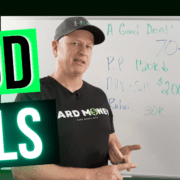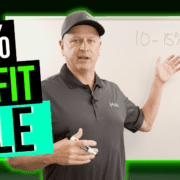What Makes a Good Real Estate Investment for Lenders?
As an investor, you should know what your lender is looking for when they’re looking for a good real estate investment.
Recently, we discussed the 15% rule and why that 70–75% ARV is so important to ensure a profit on your deals.
We want to make sure you’re prepared for all the ins and outs of real estate investing so you’re not surprised by any fees or payments.
Part of that is understanding what a good deal looks like from the lender’s perspective.
What is Your Lender Looking For?
When we look at deals, we’re looking to fund 70–75% of the ARV. The final 25–30% are taken up with your profits, closing costs, and other fees.
However, when determining our numbers, there are three things we look at:
- Purchase Price
- Selling Price (ARV)
- Rehab Costs
These three elements and the way the numbers balance between them tell us a lot about a property and an investor.
If an investor is looking for an ARV of $200,000, then we’re going to look at the moving pieces under the rehab proposal to make sure that’s a reasonable ask.
Additionally, a $200,000 market is very different from a $1M market, and your lender wants to make sure all the numbers and features of the property line up for the target market.
As lenders, we also want to know that you understand the relationship between how much you’re going to need, how much we’ll lend, and how much you’ll sell for. Understanding all of this is critical if you want to be profitable.
Returning to our example, here’s where the numbers stand:
- Purchase Price
- Selling Price (ARV): $200,000
- Rehab Costs: $30,000
75% of the ARV would be $150,000, the maximum loan most lenders will offer.
When your lender looks at a deal like the one above, we want to see a purchase price of no more than $120,000. Combined with the rehab costs, that maxes out that $150,000 loan. Any higher than that, and it will be very difficult for you as an investor to turn a profit.
An unprofitable deal for an investor is a risky deal for a lender.
Of course you could dip into your profit margin and spend more. However, protecting that 15% is what lets you keep going in the real estate game.
So What’s a Good Real Estate Investment?
A good deal is one where you put all these numbers together and prove that you’re going to make a profit.
Show your lender that you understand what it takes to bring this property up to the market conditions required for your ARV.
Especially if you’re a new investor, don’t feel pressured to take risks. It’s always better to do fewer deals if that’s what it takes to protect your profit margins.
Where We Come In…
We understand that numbers sometimes get confusing. But that’s why we’re here. We’re always happy to run through these numbers so that you understand your project before approaching a lender.
We also have free resources that can help you learn more about your investment options.
If you have any questions, reach out to us at Info@HardMoneyMike.com or fill out a contact card.
Happy investing!


